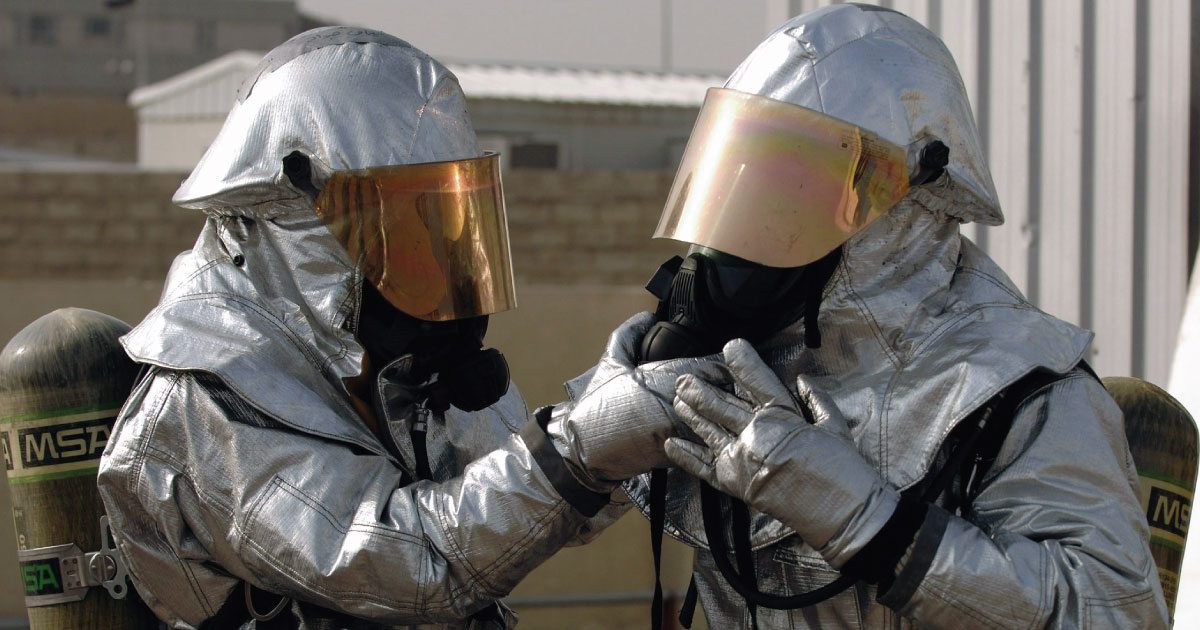Category: Cancer
New Drugs Rally Immune System to Fight Cancer
For many years, cancer researchers have questioned why the immune system doesn’t react to cancer cells as invaders and attack them. A deepening understanding of genetic drivers of disease reveals that the cancerous tumors take over the brake control on the immune system.
A recent article in The Wall Street Journal underscores the advances being made in new drugs that release the brake and allow the immune system to fight various forms of cancer, including cancers associated with asbestos exposure.
For Tom Stutz, a 72-year-old retired lawyer in California, taking each breath was a struggle and even doing simple tasks such as eating a meal required help as cancer advanced in his lungs and liver. In April, Stutz, who was confined to a wheelchair, began taking an experimental drug known as MK-3475 that reactivated his immune system to fight cancer. Today, Mr. Stutz is walking 3.5 miles a day, has parked his wheelchair, and reports feeling terrific, according to The Wall Street Journal article about innovative medical treatments. Doctors informed Mr. Stutz in the fall that his tumors had shrunk by 65 percent.
MK-3475, which has not yet been approved by the U.S. Food and Drug Administration, is under development by Merck & Co. It is among a class of drugs known as PD-1 inhibitors. The drugs disrupt the ability of cancer to hijack the immune system and boosts the immune response to certain cancers. In testing the drug on patients with metastatic melanoma, researchers reported in November that about 9 percent of patients who took the drug has no observable cancer after 12 weeks while half of the study participants had tumor shrinkage.
Merck is currently recruiting cancer patients to participate in clinical trials to study the safety and tolerability of the drug to treat several forms of cancer including non-small cell lung cancer, one of the cancers associated with asbestos exposure. You can find contact information about the clinical trial here.

Increased Rate of Mesothelioma Detected Near Former PA Asbestos Factory
Researchers at the University of Pennsylvania have received a grant from the National Institutes of Health to document how people were affected by asbestos exposure who lived near an asbestos factory in Ambler, Pennsylvania. Exposure to asbestos dust is linked to serious respiratory diseases including lung cancer and mesothelioma, a cancer of the lining of the lungs.
The Pennsylvania Department of Health has identified an increase in the rate of mesothelioma around Ambler, where an asbestos factory operated for decades, according to a Penn Medicine news release this month. Ambler is just north of Philadelphia.
Dr. Fran Barg, an associate professor at University of Pennsylvania School of Medicine, told the CBS News affiliate in Philadelphia that Ambler has been profoundly affected by mesothelioma. The Ambler Boiler House, near the town’s revived Butler Avenue district, operated for nearly a century as an asbestos-manufacturing plan, but was shuttered in the mid 1970s.
Today, residents the West and South Ambler communities remain at risk of environmental exposure to asbestos and are potentially at increased risk of developing mesothelioma, the Penn Medicine researchers say. Although the factory has long been closed, symptoms of asbestos disease take decades to appear. Current and former Ambler residents who had occupational or environmental exposure to asbestos in the 1960s or 1970s or more recently could develop mesothelioma as a result of that past exposure.
Asbestos fibers when inhaled may lodge deep in the chest cavity, causing inflammation that eventually leads to disease. Mesothelioma is incurable, but there are treatments for mesothelioma to help manage the disease if it is diagnosed before it has reached an advanced stage.
“We know there is an existing health risk, but that’s just one piece of the problem,” Barg said in a Penn press release. “These communities suffered great social and economic consequences when the asbestos factory closed, and today, they are still trying to recover from that loss.”
The five-year study is to document the asbestos impact on the community and help local leaders make decisions about the future of the former asbestos factory site in the community. Barg and fellow researcher Edward Emmett, a professor of Occupational and Environmental Medicine, will develop a storehouse of information online and at the Chemical Heritage Foundation about the asbestos-related health risks in the community.
According to the U.S. Environmental Protection Agency, environmental regulators have overseen the cleanup of more than a million cubic yards of asbestos waste that was dumped on a 25-acre site nearby.
Ambler residents can contact Dr. Fran Barg directly for information about the study by emailing her at bargf@uphs.upenn.edu.

Demolition of Houses Damaged By Hurricane Sandy Poses Asbestos Exposure Risk
Approximately 200 houses in Staten Island, Queens and Brookyn battered by Hurricane Sandy will be demolished in coming months, The New York Times reported Sunday. The houses slated for demolition are all older structures and have building materials containing asbestos.
Thousands of people have stepped forward to take part in the cleanup since Hurricane Sandy struck New York and New Jersey in late October. Dr. Raja Flores, chief of thoracic surgery at Mount Sinai Hospital, said the cleanup was in some ways comparable to the cleanup after the Sept. 11 attacks. “You have all these innocent people trying to help and they are subjecting themselves to asbestos, a known carcinogen,” Dr. Flores told The Atlantic about asbestos exposure after the hurricane.
Asbestos exposure causes serious respiratory diseases including asbestosis, a chronic scarring of the lungs, lung cancer, and mesothelioma, a cancer of the lining of the lungs. Symptoms of mesothelioma typically take decades to appear after exposure, but the cancer is aggressive once symptoms appear.
Asbestos was used in floor and roofing felts, drywall, floor tiles, insulation, spray or ceiling coatings until the 1980s when its production was curtailed. But when older houses are renovated or demolished, the asbestos fibers may be released into the air and inhaled if workers are not wearing proper breathing protection. Being exposed to asbestos fibers in the air is the major risk factor for mesothelioma, according to the Centers for Disease Control.
Demolition and constructions workers and anyone clearing construction debris may be at risk of exposure to asbestos if they disturb asbestos containing materials. The U.S. Department of Labor’s Occupational Safety and Health Administration has standards to protect workers from exposure to asbestos during construction and demolition. The standards describe the hazards of asbestos work activities and detail specific requirements for each category of work. OSHA has field staff in New York providing technical support and training for those involved in the cleanup.
New York building inspectors have declared nearly 900 building unsafe to enter, affixing red tags to signal they are unsafe to enter. But not all buildings that are tagged will be demolished.
About 2,500 to 3,000 people are diagnosed with the mesothelioma each year in the U.S. Most are older workers, retired workers and veterans who were regularly exposed to asbestos in a workplace or during military service decades ago. Asbestos disease typically takes 20 years to 50 years to appear. But once symptoms show, the disease often advances quickly and is difficult to manage with current treatments such as chemotherapy and radiation.
Know more about mesothelioma and how you can deal with it.

Mesothelioma Patients May Have Greater Access To Care Under Proposed Medicare Legal Settlement
Patients with mesothelioma and other chronic diseases and conditions may have improved care, as part of a proposed change of Medicare policy. Under a proposed legal settlement of a landmark class-action lawsuit, Medicare would start covering the costs of certain treatments for those patients with long-term diseases who need skilled services simply to maintain or slow their deterioration regardless of the underlying illness.
For years, thousands of mesothelioma patients and other Medicare beneficiaries with incurable diseases have been denied needed care based on the grounds that their condition was “not improving.” Medicare advocates said the “improvement” standard seemed to lead to cutting off physical, occupational and speech therapy for patients who had reached a plateau in their treatment.
The application of the standard is particularly devastating for patients with advanced cancers, ALS, Parkinson’s disease, Multiple Sclerosis and other degenerative diseases who are not going to improve and are seeking simply to hold onto their health and slow the effects of a disease.
According to an article in The New York Times, the proposed settlement, once approved by a federal district judge, will lead the Centers for Medicare and Medicaid Service to rewrite the Medicare benefits manual to delete suggestions that a patient’s receipt of Medicare coverage depends on the patient continuing to show improvement. The new policy would state that Medicare will cover skilled nursing care and therapy services needed for a patient to maintain their health.
Medicare provides up to 100 days of coverage per benefit period. The settlement confirms that Medicare is available for skilled nursing and therapy that is needed to maintain a person’s condition or prevent slow deterioration, for nursing home, home health and outpatient therapy.
According to the Center for Medicare Advocacy, a party to the lawsuit, the settlement is NOT limited to particular conditions or diseases. It applies to anyone who requires skilled services, regardless of the underlying illness, disability or injury.
The lawsuit was brought on behalf of a nationwide class of Medicare beneficiaries by six individuals and seven national organizations representing people with chronic conditions.
 Mesothelioma, a cancer caused by exposure to asbestos, strikes 2,500 to 3,000 people a year in the United States. Symptoms of mesothelioma take 20 years to 50 years to appear. As a result, people diagnosed with mesothelioma are typically older workers, retired workers and veterans who were exposed to asbestos dust in a workplace or during military service. While the disease takes decades to appear, it advances rapidly once it is diagnosed.
Mesothelioma, a cancer caused by exposure to asbestos, strikes 2,500 to 3,000 people a year in the United States. Symptoms of mesothelioma take 20 years to 50 years to appear. As a result, people diagnosed with mesothelioma are typically older workers, retired workers and veterans who were exposed to asbestos dust in a workplace or during military service. While the disease takes decades to appear, it advances rapidly once it is diagnosed.

New Cancer Fighting Drug Available to Mesothelioma Patients
A new cancer fighting drug is available to newly-diagnosed mesothelioma patients as part of a clinical trial at the University of Southern California.
Dr. Parkash Gill, an oncologist who supervises the mesothelioma laboratory at the USC Norris Comprehensive Cancer Center, announced this month that the cancer fighting drug EPH-B4 is available to qualifying patients who have not undergone any conventional treatment and to patients who have exhausted other treatment options such as chemotherapy and surgery.
Due to the role that the EphB4 protein plays in the transition of benign tumors into a malignant state, Gill has focused much of his research on developing EphB4-specific antibodies that have been shown to significantly interfere with blood vessel formation and reduce the size of tumors in animal experiments.
Gill said the drug has shown great promise as a solo treatment and in conjunction with chemotherapy drugs such as Alimta, Cisplatin and Carboplatin. It has been submitted to the U.S. Food and Drug Administration for a phase I clinical trial.
Gill and a team of researchers reported in the American Journal of Pathology that that drug inhibited the development of malignant tumors by interfering with the sprouting of new bloods vessels from existing vessels.
The Mesothelioma Research Foundation of America, which is supporting Gill’s research, provides funding to find a cure for mesothelioma.
Doctors diagnose approximately 2,500 to 3,000 new cases of mesothelioma in the United States each year. Most mesothelioma sufferers are older workers, retired workers and veterans who inhaled cancer-causing asbestos fibers in workplaces decades ago. Asbestos can trigger respiratory problems and growth of cancerous tumors 20 to 50 years after breathing or swallowing the microscopic fibers.
To contact Dr. Gill about the clinical trial, click here.
